Anti-Doping: Testing Evolution in Sport
From pin-pricks to the Biological Passport
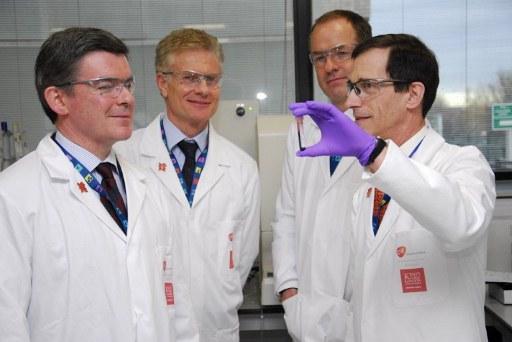
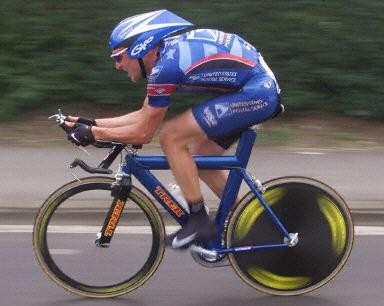

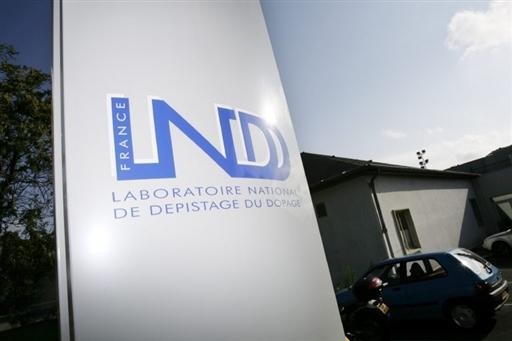

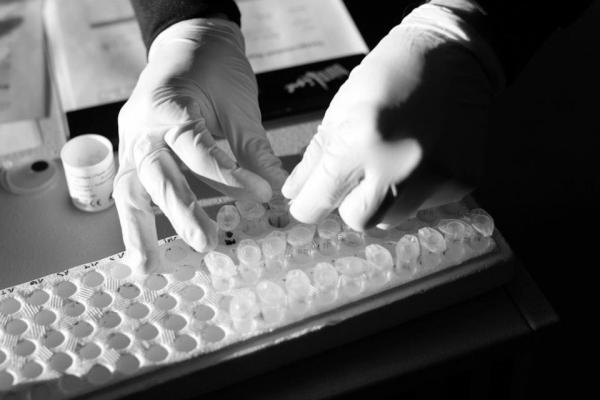
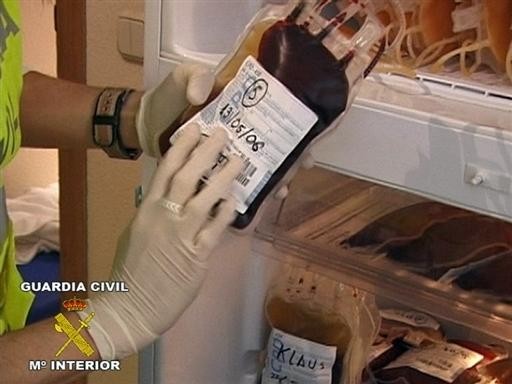
Judicial investigations and non-analytical evidence today compliment drug testing and are increasingly coming to the fore in the prosecution of doping cases. Testing, however, remains the key weapon in the anti-doping armoury, with a multi-million Euro budget set aside for it every year. Here Feargal McKay takes a look at the way the testing regime has evolved over the last half-century, particularly with a view to cycling.
From pin-pricks to the Passport
Anti-doping tests in cycling began in 1964, at the Tokyo Olympics. Following the death of Knud Enemark Jensen at the previous Olympiad, Pierre Dumas (the Tour de France's doctor) and Maurice Herzog (the French minister for health) had lobbied the UCI and been granted permission to carry out 'health checks' ahead of the hundred kilometre time trial at the Olympics. While some urine samples were collected, Dumas and Herzog were principally concerned with checking riders' bodies for evidence of recent injections. If pin-pricks were found, the riders were simply asked what they had taken and who had administered it.
Over the next couple of years, the anti-doping landscape changed radically. The French and Belgian governments enacted legislation to ban the use of stimulants in sport and began to put some stick about. The Belgians carried out searches at Gent-Wevelgem in 1965, the French at the following year's Tour. These moves effectively forced sport in general to wake up and confront a problem international federations and the Olympic movement had, at best, merely been paying lip service to. Faced with the choice of introducing official, systematic testing of their own or ceding turf to national governments, sport decided to fight the good fight against doping.
Direct Testing
Initially, the only substances that were banned were those that could be tested for. This was principally substances like cocaine, strychnine and amphetamines (although in the case of the latter there were many individual amphetamine-based products that went without a test for several years). Whole classes of drugs – principally steroids – went unbanned until tests could be developed (the first steroid tests didn't arrive until the mid seventies). This attitude changed in the 1980s when the IOC were forced to ban blood transfusions without being able to test for them. Culturally, this is an important point to bear in mind insofar as it has helped inculcate a belief among some athletes and their entourage that if a substance can't be tested for then it isn't doping, a view that has survived in some through to the present day.
At first testing was about finding traces of banned substances in urine samples. Trace evidence of the use of most drugs leaves the system quickly, meaning that the testers generally have a pretty narrow window of opportunity to spot it. But the use of such direct testing methods became even more problematic once substances that were natural to the human body entered the doping armoury. In the early 1980s indirect testing entered the picture, as a way of catching the illegal use of testosterone.
The latest race content, interviews, features, reviews and expert buying guides, direct to your inbox!
Indirect Testing
Rather than proving the use of testosterone by testing directly for it, Manfred Donike et al (in their paper 'The detection of exogenous testosterone', 1983) proposed that testers should measure the level of testosterone compared to epitestosterone. The human body naturally produces the two in an easy to measure ratio – typically one-to-one – and dosing up on testosterone throws that ratio out of kilter. By setting population limits for what the T/E ratio should be the testers were indirectly able to identify the use of testosterone.
The use of population limits, however, is problematic. Trying to get experts to agree on a fair and equitable population limit is difficult. Initially the T/E ratio was set at 6/1. Over the years this was allowed rise to 10/1 before falling back to 6/1 and is now set at 4/1. We have also seen, with the haematocrit/haemoglobin tests introduced in the 1990s by the UCI and the FIS, that setting a population limit – eg in cycling that of 50% haematocrit for men, 47% for women – can effectively allow doping up to that level.
Indirect testing doesn't have to rely on population limits for its effectiveness. It can also look at the levels of individual biomarkers. In ordinary medicine biomarkers have long been a way of diagnosing disease: levels of cholesterol in blood are indicative of heart disease, for example. In 1987, Bo Berglund published a scientific paper – 'Detection of autologous blood-transfusions in cross-country skiers' – in which he proposed using the levels of the hormone EPO as a way of spotting the use of a blood transfusion. Extracting blood causes the body to increase the levels of EPO in an effort to ramp-up production of red blood cells and replace those extracted. Re-infusing blood causes the opposite to happen as fewer new red blood cells are needed. By measuring the levels of EPO between two tests, taken a week or so apart, Berglund figured that transfusions could easily be spotted.
Unfortunately for Berglund and his team, 1987 was the cusp of the era of EPO doping, effectively negating the value of any test based on measuring levels of EPO. The proposed test is nonetheless interesting, regardless of its applicability, for as well as using indirect testing, by comparing the differences between two samples Berglund was pushing open the door to longitudinal analysis. Berglund's test was also somewhat novel in that it relied on a mix of in-competition and out-of-competition testing.
Out-of-Competition Testing
OOC testing had been in use for a decade or so at that stage, with Norwegian authorities having begun carrying out OOC tests on their athletes in 1977. Before then all testing had been done in-competition, despite authorities being fully aware of the value of doping as a training aid as well as a competition aid. In 1982 FISA, rowing's governing body, became the first international federation to approve the use of out-of-competition testing on its members, introducing short-notice OOC testing. By the end of the 1980s the use of OOC testing was widespread across a range of sports.
The effectiveness of early OOC testing was limited by a number of factors. Even after international federations came on board, some national federations were more lacklustre than others in implementing the procedure. But, for OOC testing to work, it requires a degree of co-operation among national federations in order to carry out testing on each others athletes when they train abroad. To combat this problem, in 1990 the IAAF introduced an anti-doping flying-squad, who could go anywhere and test anyone. The effectiveness of OOC testing was also limited by advance warning been given of tests: it wasn't until the 1990s that unannounced OOC testing became the norm.
The biggest problem with OOC testing, though, was knowing where athletes were in order to test them. Up to the era of WADA and the advent of the wherabouts module of ADAMS – the online Anti-Doping Administration Management System – effective OOC testing was pretty much limited to off-days during national and world championships. For the rest of the year testers could turn up at training camps or at athletes' homes, but an athlete not being available to them didn't matter much. By the late 1990s the OOC testing system was so inefficient that testers were completing fewer than half of their testing missions because of athlete unavailability. In the early 2000s USADA were first to implement a proper wherabouts system and to introduce to the three-strikes rule, under which multiple missed tests resulted in a sanctionable offence. In cycling, this didn't happen until 2006, with dire consequences for Michael Rasmussen the following year.
Wherabouts information is key to carrying out OOC tests. But, in an age of data protection laws, the collection of such information is under threat. With the rise of social media European Union authorities are taking a hard look at existing data protection laws and some of the changes proposed may challenge the ability of sports federations to collect wherabouts information and transfer it between one and other. At a WADA Executive Committee meeting held last year Pat McQuaid likened the proposed legislative changes to criminals getting the support of the EU to close down Interpol. WADA President John Fahey agreed that, without amendment, the proposed EU legislation would destroy WADA's capacity to fight doping in Europe in any real sense.
Blood Testing
Another major change in the way anti-doping tests are conducted was the advent of blood testing. From the introduction of doping controls in the 1960s cheaters have found ways around urine-based controls, from secreting containers of urine about their person to injecting clean urine into their bladders. In 1988 the ski federation, FIS, led the way with blood testing with the IOC coming on board for the Lillehammer Winter Olympics in 1992. Cycling followed suit in 1994. But even when following orders from the IOC the UCI was somewhat reluctant to adopt blood testing. Speaking in January 1997 Hein Verbruggen noted that "It must be made clear that our anti-drug commission has always been against blood test controls because of ethical problems." Other federations, of course, have been even more reluctant to collect blood samples and simply don’t bother.
Retrospective Testing
Testing took another new turn in 1999 with the promise of retrospective re-testing of stored samples. The previous year, after a decade of trying to sweep the EPO problem under the carpet, cycling authorities were forced to confront the issue of blood doping. Fortunately, after years of searching and false promises, an EPO test was on the horizon and set to be rolled out at the Sydney Olympics in 2000. In response to persistent criticism in the media and from the likes of Gérard Dine and the ASO, the UCI promised to put all samples from the 1999 Tour on ice and re-analyse them once the EPO test had been validated. When, in 2001, cycling introduced the EPO test ahead of the Classics season, the UCI giddily proclaimed that "the monster has been vanquished. Success at last!" They then promptly forgot their promise to re-test the 1999 Tour's samples.
One reason for this may have been that the UCI thought they had legal issues with re-testing. Certainly the 2006 Vrijman report into the re-testing of stored samples from the 1999 Tour de France for research purposes challenged the use of retrospective testing. Vrijman noted that there were neither rules nor procedures for the conducting of such tests and pointed out that existing rules required that doping control forms be destroyed after two years (while the samples they identified could be stored for eight). He also questioned the reliability of tests on stored samples insofar as detection methods had been validated on samples collected only a short time before testing. According to Vrijman, it was "simply irresponsible" to suggest that disciplinary procedures could be initiated on the basis of such tests and "the spectre of meaningful retrospective testing that could yield lawful sanctions against athletes remains nothing more than an empty threat."
Retrospective testing had been used in the past, such as when the T/E test came in, but only to establish the scale of the problem and not to initiate disciplinary procedures against individuals. As a means of bringing charges, retrospective testing has – despite the concerns expressed by Vrijman – been used successfully in more recent years. Ahead of the London Olympics WADA turned the clock back to 2004 and decided to re-test a small number of the remaining stored samples, before the statute of limitation rules kicked in and they got flushed down the drain. That resulted in an additional five violations being identified. The IAAF recently completed retrospective testing of samples from 2005, resulting in six new violations being identified and five medals having to be reallocated. The IAAF also bumped three athletes from the London Games after re-testing samples from 2011 ahead of the Olympics.
The key issue surrounding retrospective testing appears to be inconsistencies on how long samples are stored for: some, from the Olympics or the Tour, might be stored for the full eight years of the statute of limitations, while others are flushed within months. Storage is an expensive proposition and the money simply isn’t there to store everything.
Probably the bigger issue though is authorities blowing hot and cold on the issue of retrospective testing: at the one moment trying to talk it up as a way of scaring people into refraining from doping while at the other too scared to really use it for fear of what it will reveal. Within cycling, as a means of picking off individuals the UCI seems happy to use retrospective testing in certain individual cases – as they did in the case of Thomas Dekker – but as a means of policing the entire peloton it is a tool the UCI appears unwilling to use.
Longitudinal Testing
In 1999, in response to the Festina scandal of the year before, French authorities – lead by Gérard Dine – introduced quarterly health checks as a way of combating the doping problem. Like the haemeatocrit/haemoglobin tests introduced a few years earlier, these were technically not doping tests and riders who failed them could only be 'rested' on health grounds. But by comparing data between one health check and another – longitudinally – the authorities were at least able to use the threat of temporary suspension to encourage French riders to reduce their doping. The problem, though, was that this was applicable only to French riders. And then not even all French riders: Laurent Jalabert and Richard Virenque simply moved abroad to avoid having to submit themselves to the health checks.
The idea of longitudinal testing had been around for some time at this stage – Bo Berglund, as we've seen, had tried using a version of it in 1987 – and interest in it grew rapidly through the early years of the new century. In 2003 Malcoveti et at published 'Hematologic passport for athletes competing in endurance sports: a feasibility study.' By 2007 Berglund and others in Sweden had come up with a Passport project while Peierre-Edourad Sottas and others at the Lausanne laboratory had begun working on a forensic approach to the interpretation of biomarkers (indirect testing) and using Bayesian statistics to interpret haematological values.
Initially the private sector was able to adapt to the new possibilities quicker than sports federations, with independent anti-doping programmes being offered to cycling teams by the likes of ACE and Rasmus Damsgaard. For various reasons these found a number of willing clients: by the end of 2006 Bjarne Riis, Bob Stapleton and Jonathan Vaughters were all using independent testing in their teams. Within a year the UCI announced the introduction of the Biological Passport.
The Athlete Biological Passport
In theory, the Athlete Biological Passport is the crowning glory of half a century of advances in drug testing. Individually, each of the components of the testing regime that have been developed over the last five decades have weaknesses which hamper their effectiveness. But taken collectively, in the form of the ABP, the impact of those weaknesses is lessened. Longitudinal indirect testing of blood and urine samples collected in- and out-of-competition allow profiles to be created for each individual athlete and from those profiles individual thresholds established. Profiles that fall outside of these individual limits get flagged as potential anti-doping violations. Other profiles can get flagged for ether retrospective testing of stored samples for particular substances, or individuals can be identified for targeted testing. The Passport thus becomes a means to collect all available information on one individual and, based on an analysis of that data, identify the most appropriate tool to use if doping is suspected.
That, at least, is the theory. Practice and theory differ somewhat, though. The most obvious difference is that the version of the Passport that exists today is incomplete. A complete Passport should be capable of spotting both steroid-based doping and oxygen vector doping. At present the ABP is capable only of spotting the latter: the steroid profile is still under development. FIFA – one of two federations to become recent high-profile adopters of the Passport principle – have promised to have the steroid profile up and running when they introduce the Passport in 2014. But the UCI have been promising the arrival of the steroid profile since 2007.
A fully-functioning ABP will still not be foolproof. Fifty years of history has shown that those who choose to dope adapt to their changing environment. As a minimum, though, a functioning ABP holds out the promise of being able to control the levels of doping and level the playing field somewhat for those who want to compete clean. And, implemented properly, the ABP does offer those federations that wish to really root out doping the opportunity to use the information it produces to target those most likely to have committed an offence. If the will is there to use it properly, the Passport can be a powerful weapon in the anti-doping armoury.